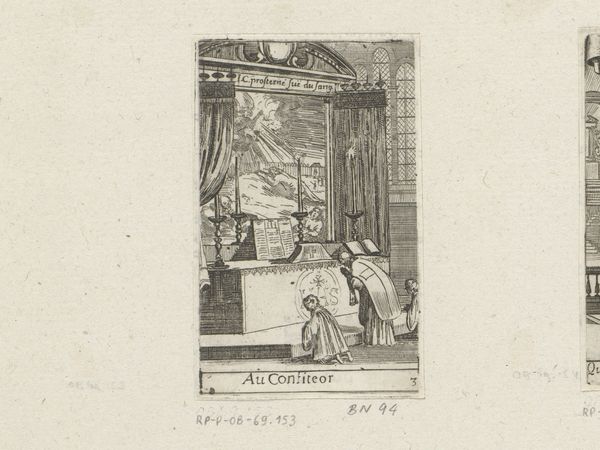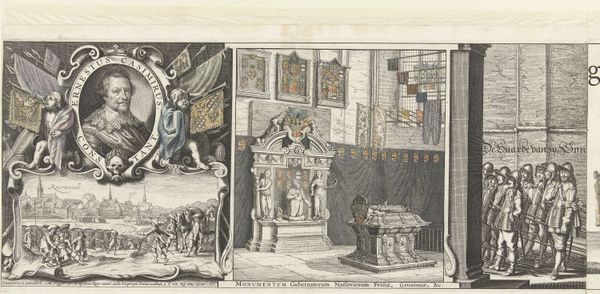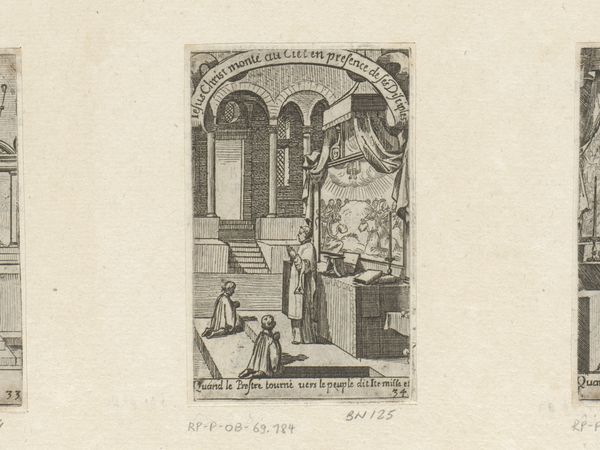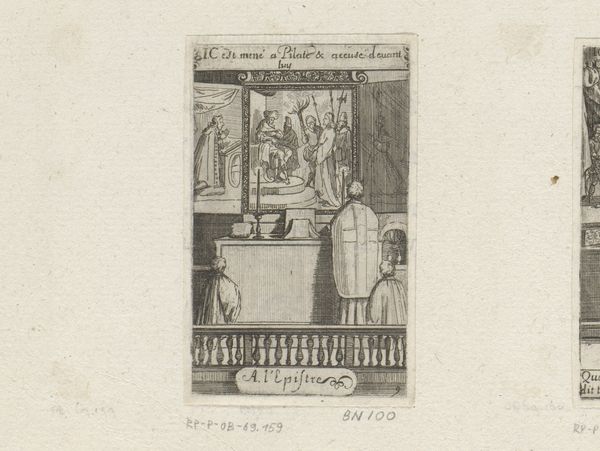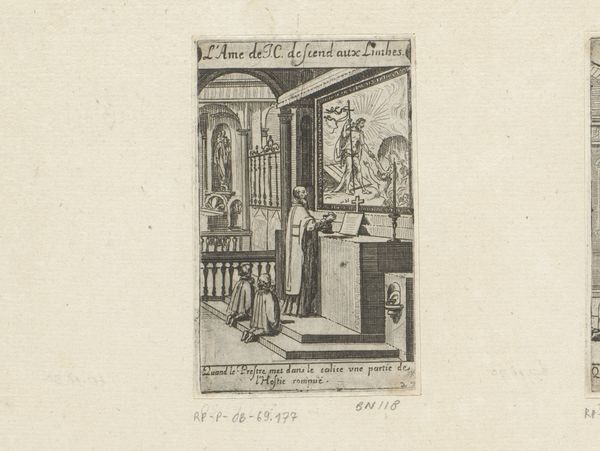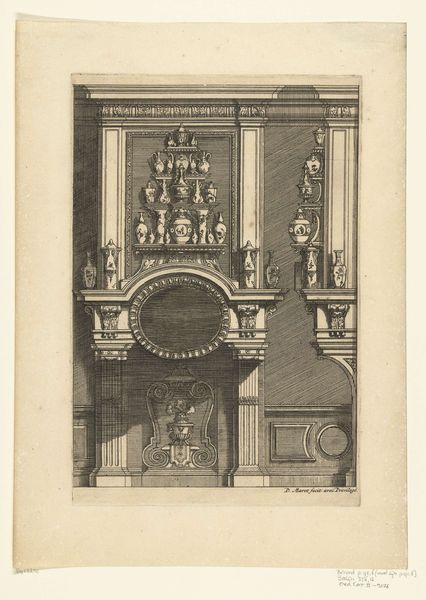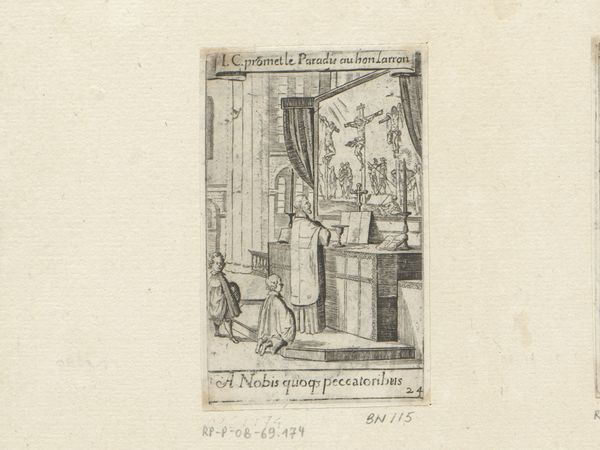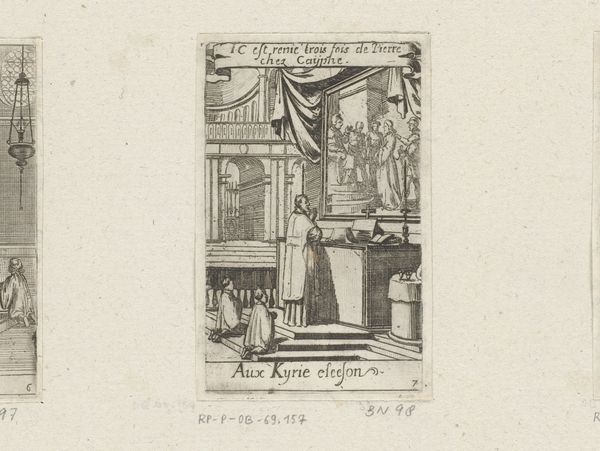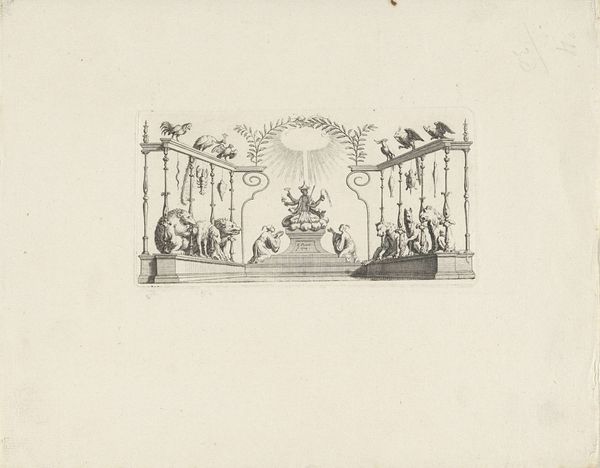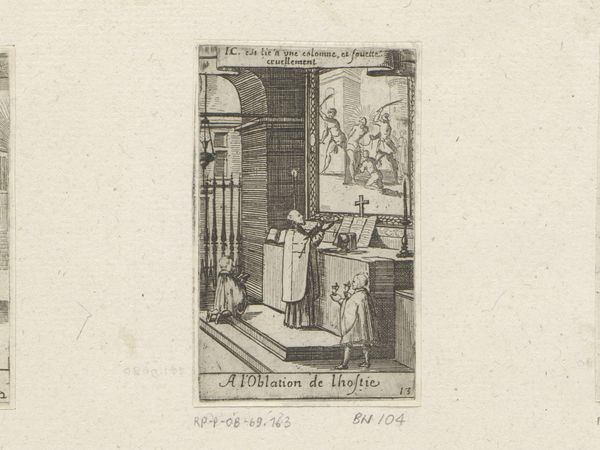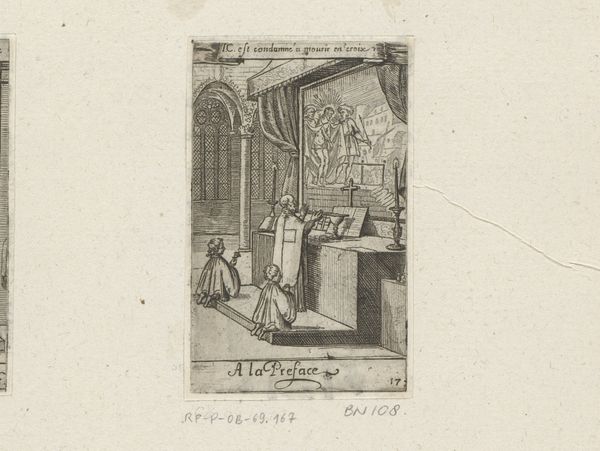
Grafmonument voor Willem Lodewijk, graaf van Nassau-Dillenburg, 1620 18th century
0:00
0:00
print, engraving, architecture
#
baroque
# print
#
old engraving style
#
form
#
line
#
cityscape
#
history-painting
#
engraving
#
architecture
Dimensions: height 201 mm, width 184 mm
Copyright: Rijks Museum: Open Domain
Editor: Here we have an 18th-century print titled "Grafmonument voor Willem Lodewijk, graaf van Nassau-Dillenburg, 1620" housed at the Rijksmuseum and attributed to an anonymous artist. It seems to depict a memorial inside a church, with rather ornate tombs. What catches your eye when you look at this image? Curator: What I find particularly interesting is how this print serves as a form of public memory. Created long after Willem Lodewijk’s death in 1620, it presents us with an 18th-century perspective on a historical figure. We see how the artist, and by extension, the society of the time, wished to portray and remember their leaders. Editor: So it’s not just about the individual, but also about the values of the time it was made? Curator: Precisely. Consider the choice of a grand, architectural setting and detailed rendering, invoking Baroque aesthetics. It speaks volumes about the importance placed on lineage, power, and the performative aspect of mourning within the socio-political landscape of the 18th century. This isn't merely a record of a tomb; it's a statement about the continued relevance of the Nassau dynasty and the cultural forces at play at the time. The decision to depict the tomb in such detail suggests a deliberate act of preservation and promotion of a specific narrative. Editor: It's fascinating to consider how much this piece communicates about the period it was created in, not just the period it depicts. I see the art as social and political statement. Curator: And that’s a crucial realization. It’s through such pieces that we understand the ongoing dialogue between art, power, and public perception across history.
Comments
No comments
Be the first to comment and join the conversation on the ultimate creative platform.
